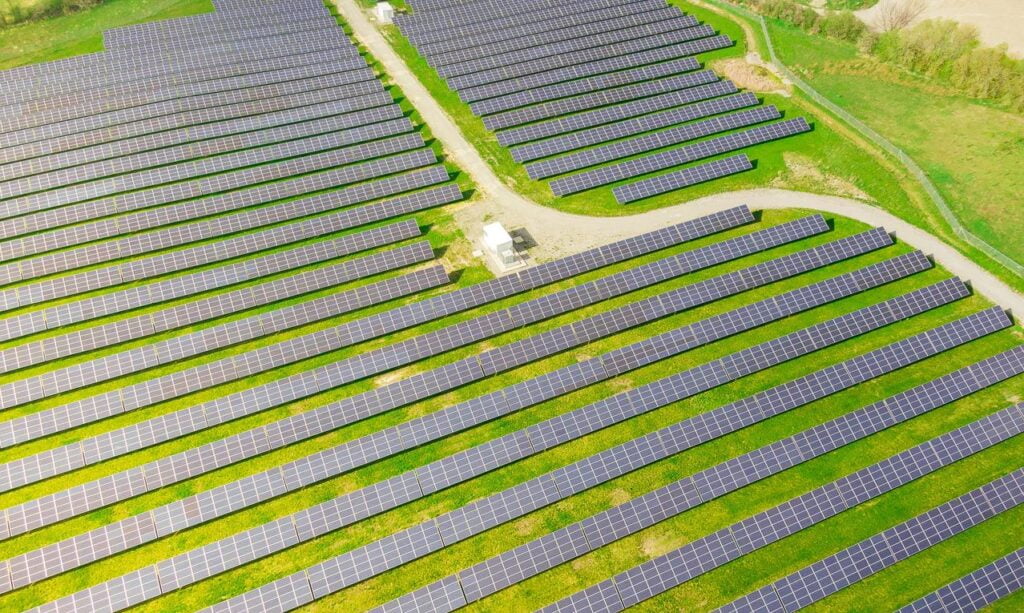The International Energy Agency (IEA) predicts in a survey report released recently that the installed capacity of photovoltaics, wind power, and other renewable energy sources installed globally will achieve triple-digit growth this year, and the new photovoltaic power generation capacity will reach 190GW.
This year, the world’s total installed renewable energy capacity will exceed 300GW for the first time, driven by an 8% increase due to growing concerns about climate change and energy security, while the installed capacity of renewable energy installed globally in 2021 will almost reach 295GW.
Global renewable energy capacity installed in 2021 increased by a record 6%, despite supply chain challenges, construction delays, and continued increases in raw material and commodity prices caused by the Covid-19 pandemic, the International Energy Agency said.
In its latest renewable energy market report, the International Energy Agency said that the installed capacity of photovoltaics, wind, and other renewable power generation globally will reach a record level in 2022, up more than 8% compared to last year, and will grow to nearly 320GW, with China, Latin America, and the EU leading the way.
Fatih Birol, executive director of the International Energy Agency, said the conflict between Russia and Ukraine added to the urgency of accelerating the transition to clean energy, with governments increasingly looking to enhance the energy security and climate benefits of renewable energy.
He said, “Energy market developments in recent months, especially in Europe, have once again demonstrated the important role of renewables in improving energy security and their proven effectiveness in reducing carbon emissions. Cut red tape, speed up Approval, and provide appropriate incentives to accelerate the deployment of renewable energy, are some of the most important actions governments can take to address today’s energy security and market challenges while maintaining the possibility of meeting our international climate goals.”
According to the International Energy Agency, the global installed capacity of photovoltaic systems will account for 60% of the total installed capacity of renewable energy this year, and it is expected to reach 190GW, an increase of 25% compared with last year. In 2022, utility-scale PV projects will account for almost two-thirds of the total installed PV system capacity, largely due to a strong policy environment in China and the European Union that drives faster deployment.
In 2021, China’s newly installed renewable energy capacity will account for 46% of the world’s total. It is expected to continue to grow from 2022 to 2023, with an average annual installation of more than 140GW, mainly driven by the growth of large-scale photovoltaic systems installed.
Installed renewable energy capacity has grown despite challenges such as rising commodity and freight prices. Prices and freight rates for many raw materials have been on an upward trend since early 2021, the IEA said. By March 2022, the price of polysilicon has more than quadrupled, the price of steel has risen by 50%, the price of copper has risen by 70%, the price of aluminum has doubled and the price of freight has risen by nearly five times.
In its report, the IEA noted, “We estimate total investment costs for new utility-scale PV systems and onshore wind facilities to increase by 15% to 25% in 2022 compared to 2020. Soaring freight rates are onshore The most important factor in the overall price increase for wind power. For PV systems, the impact of rising freight, polysilicon, and metal prices is more balanced.”
While PV system installation costs are forecast to remain higher than pre-COVID-19 levels in 2022 and 2023, the IEA said the cost competitiveness of PV systems has actually increased due to sharp increases in gas and coal prices. While the cost of photovoltaic systems and wind facilities has increased, reversing a decade-long trend of cost declines, the prices of natural gas, oil, and coal have risen faster, thus actually making renewable power generation more competitive.
While the outlook for new renewable energy capacity additions in 2022 looks strong, the International Energy Agency has warned that global renewable energy growth could lose momentum in 2023 under current policies.
While the world is expected to install another record PV system capacity in 2023, reaching nearly 200GW, this is likely to be offset by a 40% drop in hydropower capacity and an increase in wind power.
In the report, the IEA said, “In the absence of stronger policies, new renewable energy capacity additions globally are expected to remain stable in 2023. Ultimately, forecasts for the renewable energy market in 2023 and beyond will depend on whether stronger policies are introduced and implemented in the next six months.”



